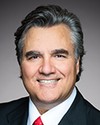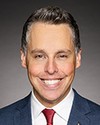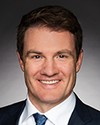Thank you very much for this question. In fact, this is a point I wanted to bring up. Upon further analysis of all the programs available, in order to fund infrastructure development in airports specifically in Canada, I have found that the programs we have on hand are not conducive to helping Arctic aviation for structure building.
The airports capital assistance program does have small amounts. These small amounts are for our community airports, but they do not.... We cannot look at airports in our communities in the north as community airports. We must look at them as vital, fully functional airports that are necessary, like a Pierre Elliott Trudeau airport or a Pearson airport. They need a lot more capital investment in them than just a smaller regional airport functioning out of Thunder Bay or Saint-Hubert.
Second, we are also looking at a permafrost situation. Climate change is affecting airport infrastructures in a very drastic way. Asphalt, the typical building material that has been used to pave airports worldwide, including in our north, is no longer a possibility when you go very far north.
The airport at Iqaluit and the airport at Whitehorse are paved using asphalt, but when we're looking at airports such as Cambridge Bay or Resolute Bay and so on, the capital needs are much higher. If we look at aluminum, we're looking at costs of about $90 million.
I have the figures with me. An asphalt runway will cost about $35 million to lay today. An aluminum runway will cost about $90 million. However, at year 20, they break even. At year 40, we are looking at an $80 million savings if you were to put an aluminum runway in the north versus asphalt.
The key issue is not just in terms of the overall totality of the cost; it's also the yearly maintenance. If we lay asphalt, we need to maintain it on a yearly basis. If the cracking is worse as we go further north, we need to have a robust infrastructure program in place that has the capital necessary, perhaps in partnership with the Canada Infrastructure Bank and with other folks who have pockets of money for regional economic development and so on, to ensure that these airports are treated as vital pieces of infrastructure needed for the development of these regions, and not just as community airports.




